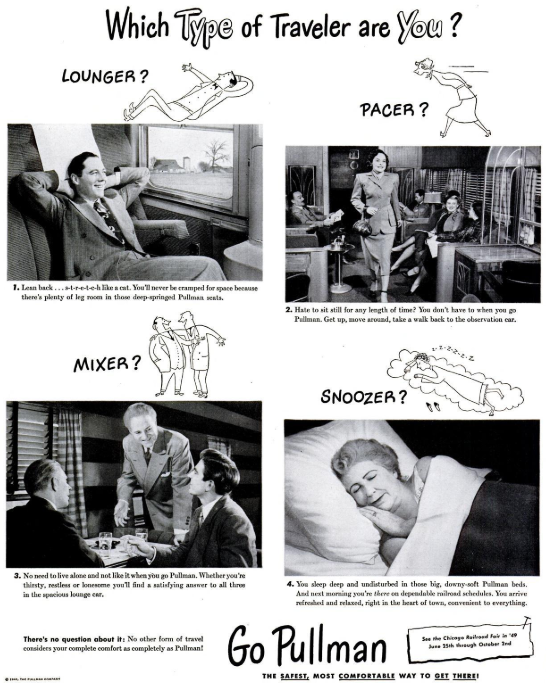This tale illustrates how complacency with success can lead to the downfall of even the largest companies. In 1949, during a downturn in the US stock market, the ten companies listed below offered dividends as high as 10%, with stocks priced below their working capital (not even counting their significant physical assets). Stockbrokers were puzzled by the lack of interest in these investments. Among the largest at the time, these ten companies are now defunct. It might be easy to assume that insider knowledge about their futures deterred investors, but that wasn’t the case. Each of these companies continued to operate at least until the mid-1950s.

Ultimately, these companies were doomed by their complacency with success, stemming from their dominant market position and size.
They were industry leaders yet failed to adapt to changing times. Take Lima-Hamilton, for example, which produced steam locomotives. As diesel engines gained popularity, Lima stubbornly clung to steam technology until their downfall. Similarly, Pullman, dominating the luxury sleeper car market for trains, did not foresee the decline in business due to rising automobile and airplane travel, leading to their demise.

The stock chart from that period is fascinating. Brokers were puzzled over why these seemingly undervalued stocks weren’t selling. The market was, in fact, grappling with the recession of 1949, which lasted 11 months—from November 1948 to October 1949. The real question is: why didn’t the executives of these leading companies anticipate the changes and adjust their market strategies to ensure their survival? The answer lies in a mindset of complacency and resistance to change.
The downfall of these companies serves as a cautionary tale for businesses today.
In today’s rapidly evolving market, it is crucial for companies to not only adapt but also stay ahead of the curve. The rise and fall of once-prominent companies such as Blockbuster, Kodak, and Sears have proven that no company is too big or successful to fail if they do not innovate and evolve with the times.
Moreover, this historical event highlights the importance of continuous learning and staying informed about market trends. Complacency with success can doom a company. It is essential for business leaders to constantly reassess their strategies and be open to new ideas, technologies, and consumer preferences. As the saying goes, “change is the only constant,” and those who resist it will eventually be left behind.
Here are some tips for businesses to avoid the fate of these defunct companies:
- Conduct regular market research and stay up to date on industry trends
- Invest in innovation and constantly look for ways to improve products or services
- Encourage employee creativity and foster a culture of continuous improvement
- Diversify revenue streams to reduce reliance on a single product or service
- Embrace technology and integrate it into business operations
- Be open to feedback from customers, employees, and industry experts to identify areas for improvement.
By implementing these strategies, businesses can not only survive but also thrive in an ever-changing market. Let us learn from the mistakes of the past and use them as steppingstones towards a more successful future.
In conclusion, the downfall of these ten once-successful companies serves as a reminder that no business can afford to become stagnant. Complacency with success must not cause a company to avoid innovating. Companies must always be willing to evolve and adapt in order to stay relevant and competitive in an ever-changing market. Those who fail to do so risk being overtaken by their more innovative and forward-thinking competitors.
Here is what the ten companies on the list made and when they went out of business:
- Bigelow-Stanford – manufacturing and selling electric refrigerators. They went out of business in 1955.
- E. W. Bliss – manufacturing and selling machine tools, presses, and dies. They went out of business in 1953.
- Cincinnati Milling – also known as “The Mill,” manufacturing and selling milling machines. They went out of business in 1953.
- Douglas Aircraft – manufacturing and selling aircraft. They were acquired by McDonnell Aircraft Corporation in 1967 and became a division of McDonnell Douglas until their final demise in 2006.
- Foster Wheeler – engineering and construction, as well as manufacturing boilers and turbines. They were acquired by Amec Foster Wheeler in 2014 and later renamed to Wood plc in 2017.
- Lee Rubber & Tire – manufacturing and selling rubber products. They went out of business in 1969.
- Lima-Hamilton – manufacturing and selling steam locomotives. They were acquired by Baldwin Locomotive Works in 1947 and phased out operations by the early 1950s.
- Montgomery-Ward – retail, selling a wide range of products. They went out of business in 2001.
- N. Y. Shipbuilding – building ships for the US Navy and commercial clients. They went out of business in 1967.
- Pullman – luxury sleeper cars for trains. They went out of business in 1969 after facing financial struggles due to the decline in train travel.
Click here for a post on how to not let success ruin your career.
You may also like:

